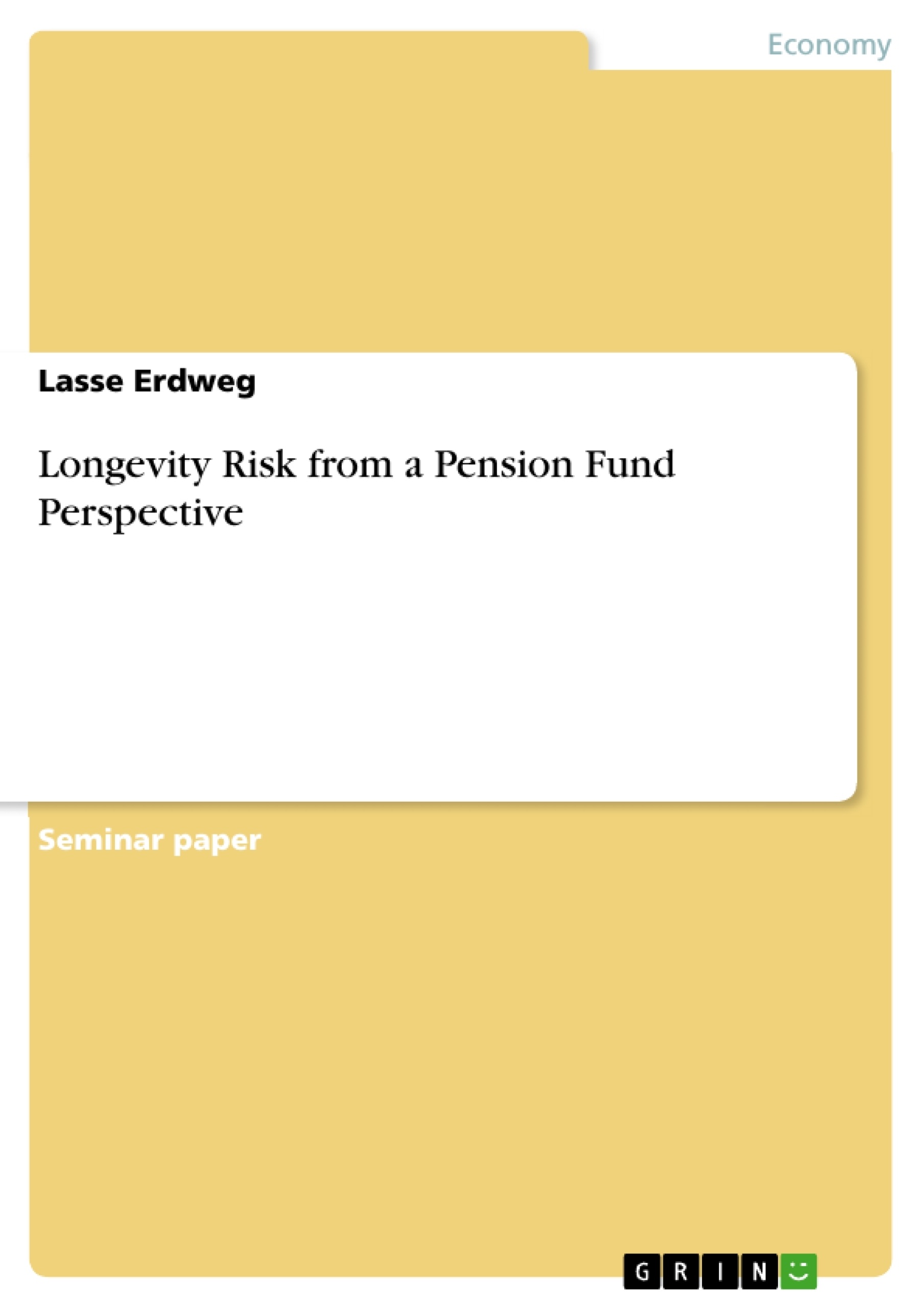Assurance companies face two main risk factors in the process of pricing annuity products namely the interest risk and the longevity risk. There are numerous products and possibilities for the insurers to hedge their interest risk using interest derivatives and long bonds. Hedging products against the longevity risk is uncommon but insurers have to take it into account when they are pricing their annuity products.
There are two types of longevity risks. On the one hand the idiosyncratic longevity risk and on the other hand the systematic longevity risk. With regards to the idiosyncratic longevity risk, individuals are faced with the issue that they need to invest in assets for their retirement in spite of an uncertain span of lifetime and thus an uncertain investment horizon. Pricing of life annuities could be done according to corresponding mortality tables. If the clients of an insurer die on average according to mortality rates provided by such tables, the revenues of the insurer should be sufficient to ensure the payments for the clients who are still alive. The issue out of a pension fund perspective is that longevity has been improving over time and clients could live longer than anticipated. These improvements occurred in an unpredictable way, especially at higher ages according to Cairns et al. (2006). Insurers therefore made false calculations of the insurance premium and suffered losses due to pensioners living longer than anticipated.
The systematic longevity risk is based on the stochastic variation of mortality. The future development of life expectancy will be highly unpredictable due to medical improvements or discoveries in genetic research. For that reason insurers need stochastic models to quantify the systematic mortality changes over time and to make a prediction about future mortality in order to prevent losses caused by longevity risk.
This paper will firstly discuss the literature regarding the Lee and Carter one factor model and the relevance of longevity risk for annuity pricing. Second this paper aims to estimate the stochastic two-factor model by Cairns, Blake and Dowd (2006) (CBD) for U.S. males from 1933 to 2010 by running a simulation to predict average mortality for the year 2030. In the further course will this stated prediction be used to price an annuity product followed by a brief conclusion and summary of results.
Table of contents
List of Figures
List of Tables
List of Abbreviations
1 Introduction
2 Literature Review
3 Model Implementation
3.1 Estimation of A_1 and A_2
3.2 Prediction of A_1 and A_2
3.3 Predicted Mortality Rates for 2030
3.4 Pricing of an Immediate Pension Annuity
4 Conclusion
References
- Quote paper
- Lasse Erdweg (Author), 2015, Longevity Risk from a Pension Fund Perspective, Munich, GRIN Verlag, https://www.grin.com/document/310639
-

-

-

-
Upload your own papers! Earn money and win an iPhone X. -

-
Upload your own papers! Earn money and win an iPhone X. -

-
Upload your own papers! Earn money and win an iPhone X. -

-
Upload your own papers! Earn money and win an iPhone X. -

-
Upload your own papers! Earn money and win an iPhone X. -

-
Upload your own papers! Earn money and win an iPhone X.

